BandLab
INTRODUCTION
Many amateur and aspiring musicians seek to team up with others to collaborate on projects or form bands, however there is a shortage of tailored solutions for connecting musicians. The result is that artists often struggle to find like-minded partners with complementary skills and styles, making it difficult to collaborate effectively.
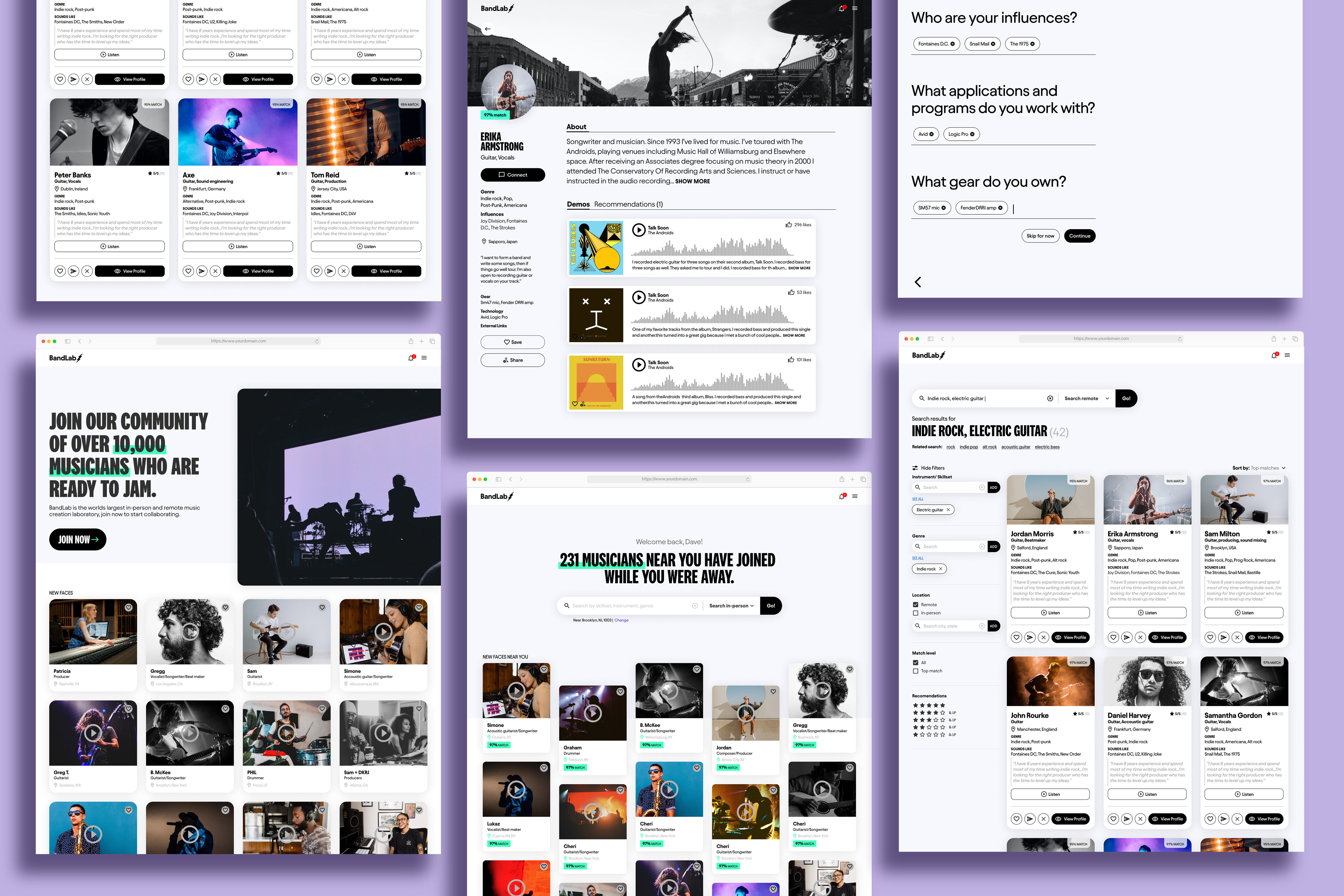
TIMEFRAME
ROLE
THE CHALLENGE
“The more experienced I get the more focused my music ideas are, which makes it harder to find people to collaborate with. Finding artists that fit a similar vision is tough.”
INTERVIEW PARTICIPANT
![]()
![]()
![]()
![]()
![]()
12 weeks
ROLE
Product strategy, UX research, UX/UI design
THE CHALLENGE
How might we design a platform that helps music creators connect and collaborate, encouraging a thriving community of artists working together on music projects?
“The more experienced I get the more focused my music ideas are, which makes it harder to find people to collaborate with. Finding artists that fit a similar vision is tough.”
INTERVIEW PARTICIPANT
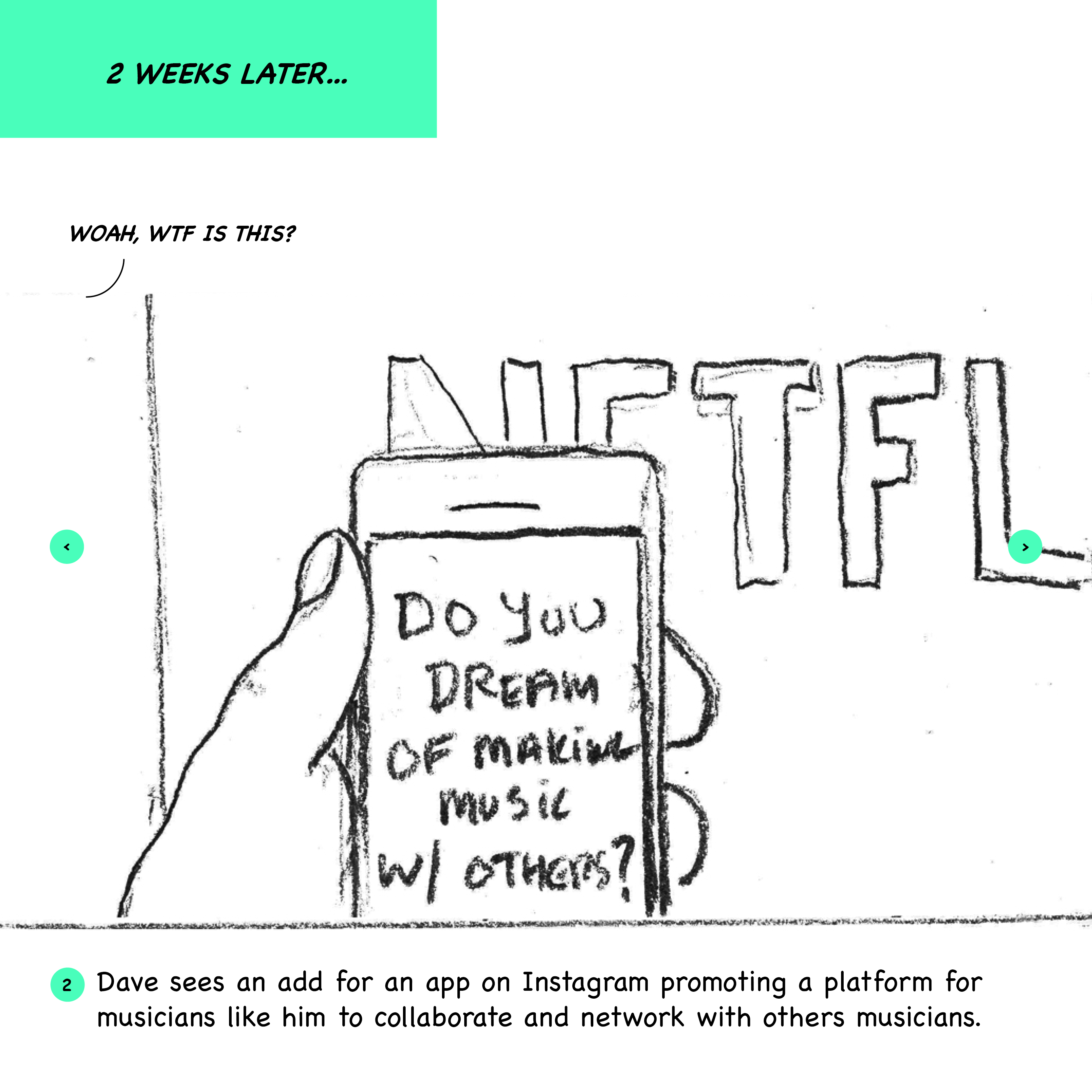
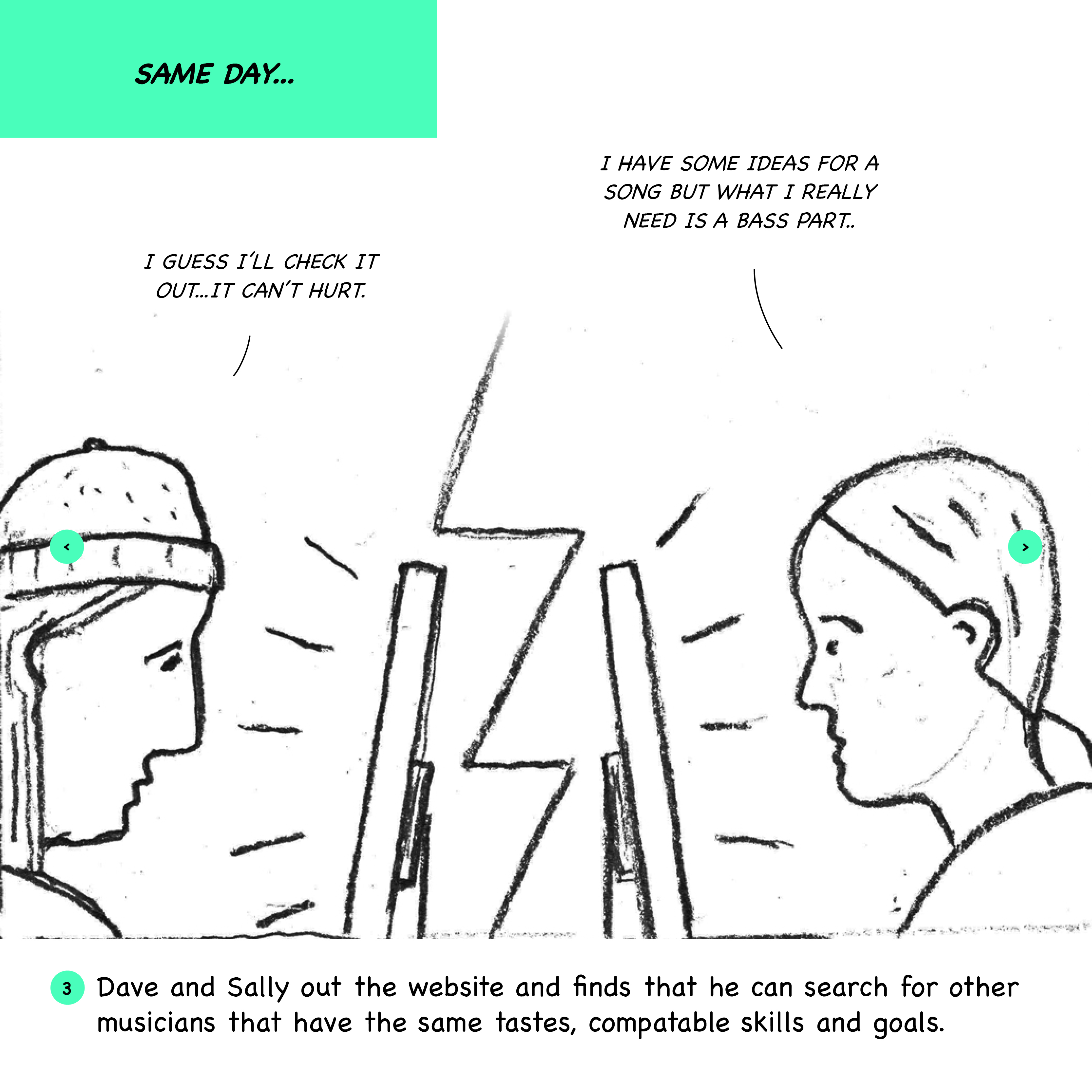

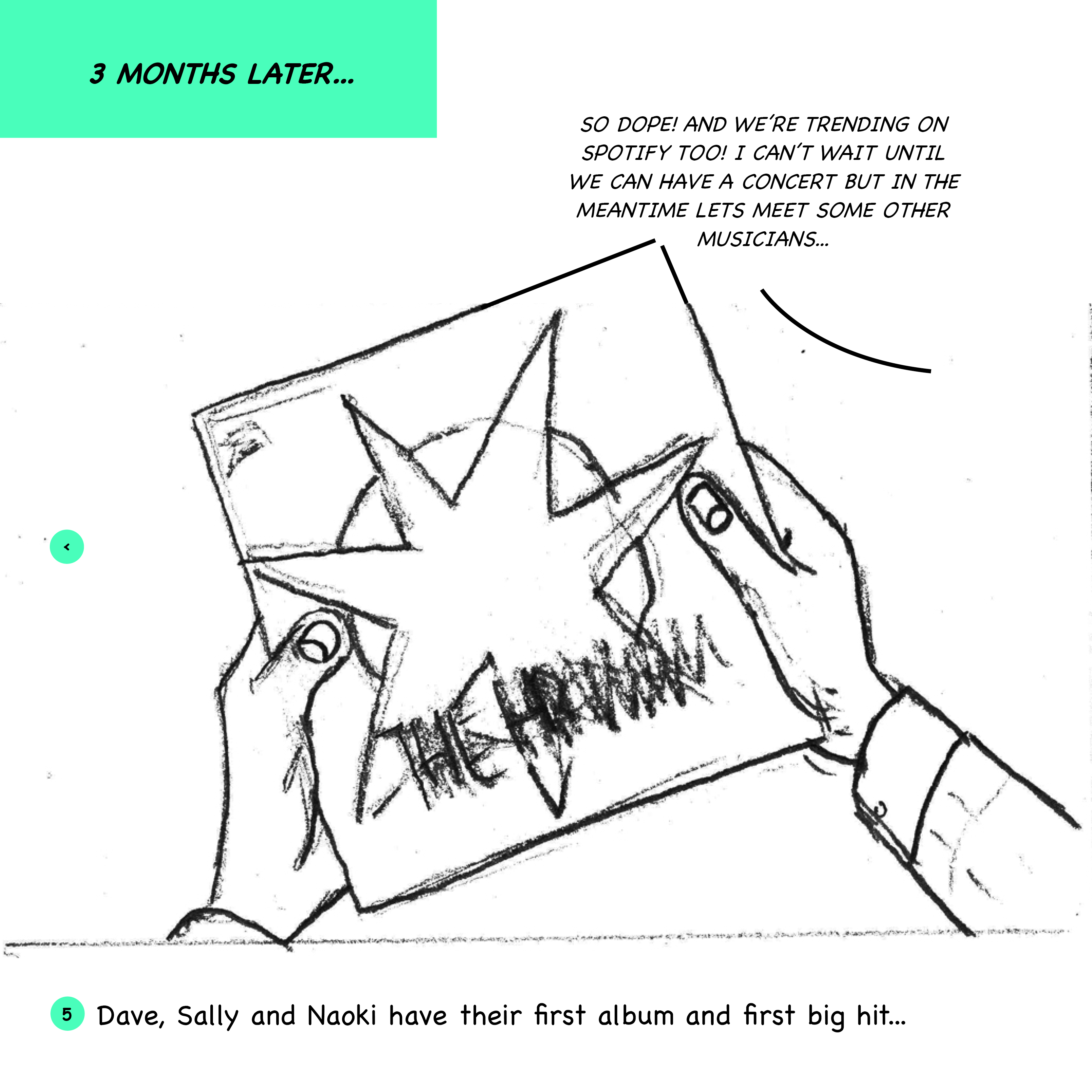
ABOVE: An early storyboard helped communicate the concept to stakeholders.
RESEARCH: EARLY INSIGHTS
A competitive analysis of direct and indirect competitors revealed the following insights:
![]()
A competitive analysis of direct and indirect competitors revealed the following insights: - Musicians use informal solutions such as sub-groups in Reddit and CraigsList to find collaborators, however these platforms do not offer musicians a means to search for and evaluate like-minded partners with complementary skills and styles.
- Many existing solutions are niche and used by professionals and are based on monetary exchange.
Therefore, an opportunity exists for an easy-to-use solution that helps amateur and aspiring musicians connect with like-minded partners.
- Musicians use informal solutions such as sub-groups in Reddit and CraigsList to find collaborators, however these platforms do not offer musicians a means to search for and evaluate like-minded partners with complementary skills and styles.
- Many existing solutions are niche and used by professionals and are based on monetary exchange.

RESEARCH: DIGGING DEEPER
To better understand my target audience’s goals and challenges, 1:1 interviews and a survey with aspiring musicians were conducted.
Research questions:
What are the characteristics of a successful musical collaboration?
What are the characteristics of a unsuccessful musical collaboration?
Why do musicans seek out collaborators?
How do they currently find collaborators?
Research methods:
Five, 1 hour long, 1:1 user interviews with aspiring musicians.
A survey of 33 aspiring musicians.
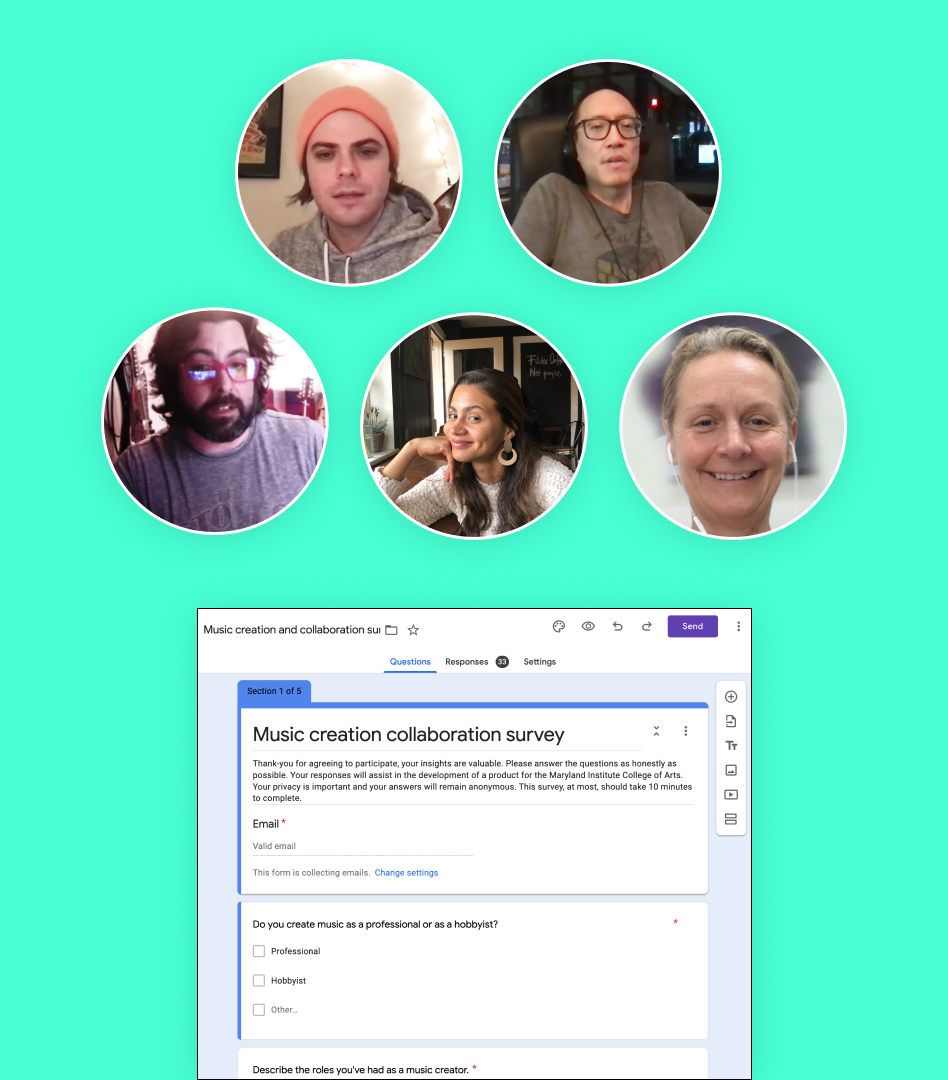

ABOVE: Synthesizing the data into an affinity map, organizing data points into thematic groups.
Findings:
42%of responents said they have collaborated with other musicians in the past year.
48%of those said they collaborated remotely.
51%said they look for opportunities to collaborate with others.
The research identified 5 common attributes found in successful music collaboration:
Similar taste & vision: Is there a similarity of tastes and do collaborators like the same genres of music?
Complementary skill sets: Are the skillsets complementary and what is the collaborators skill level?
Alignment of goals: Do their commzitment, ambition and dedication match? Do each other's goals align?
Technology, applications & programs: Are they able to record at a high quality and on compatible platforms
Compatible personalities: Is the other person open to feedback, and easy to work with? Do they have an ego? Are they organized, and responsive?
“Working with people that have similar tastes is important...each person needs to be able to put themselves in the others shoes and understand how to think from the others perspective.”
INTERVIEW PARTICIPANT
RESEARCH: PERSONAS & USER JOURNEYS
Personas and user journey maps were developed, consolidating the goals, behaviors, needs and pain points of the target users.



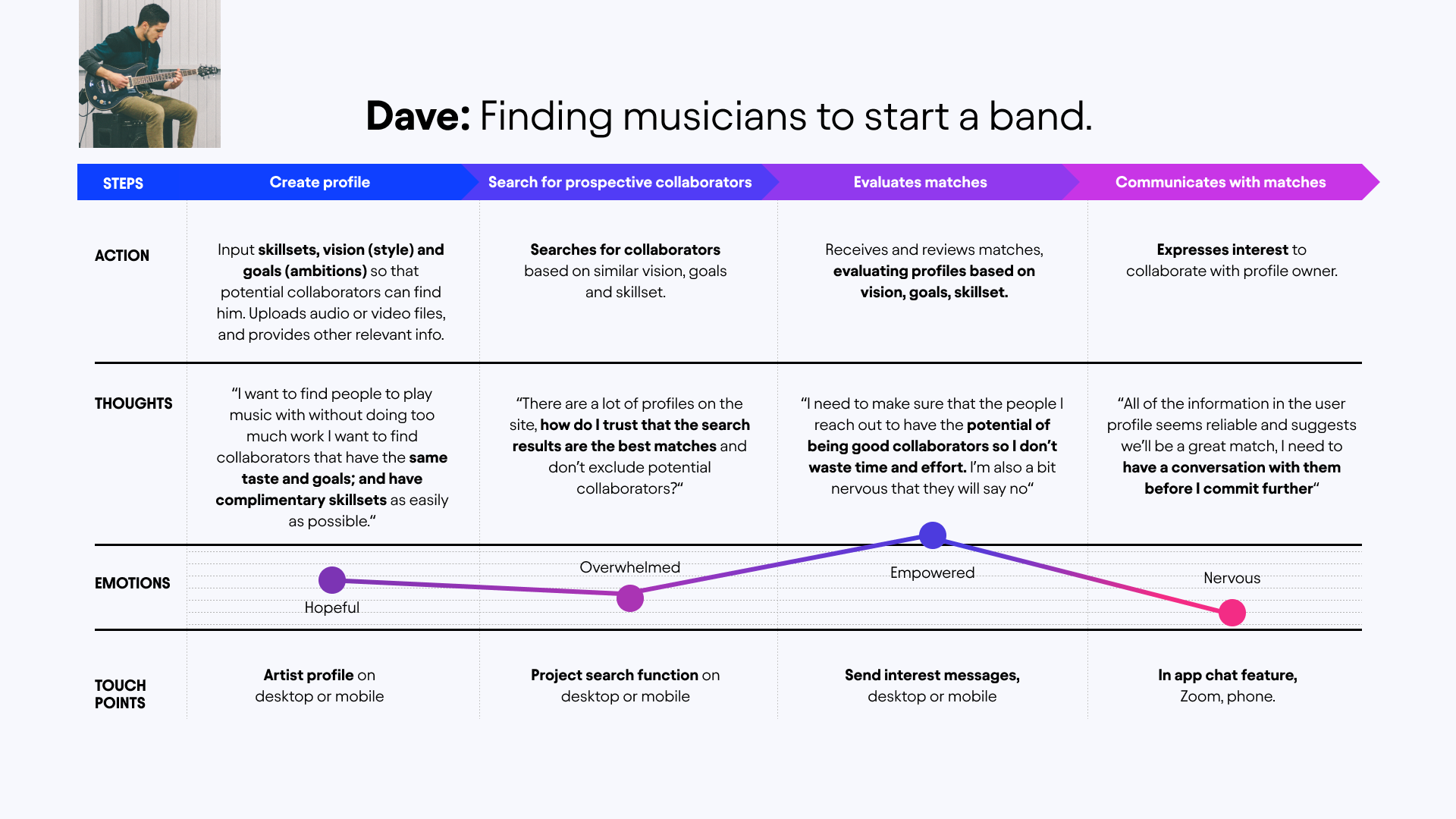

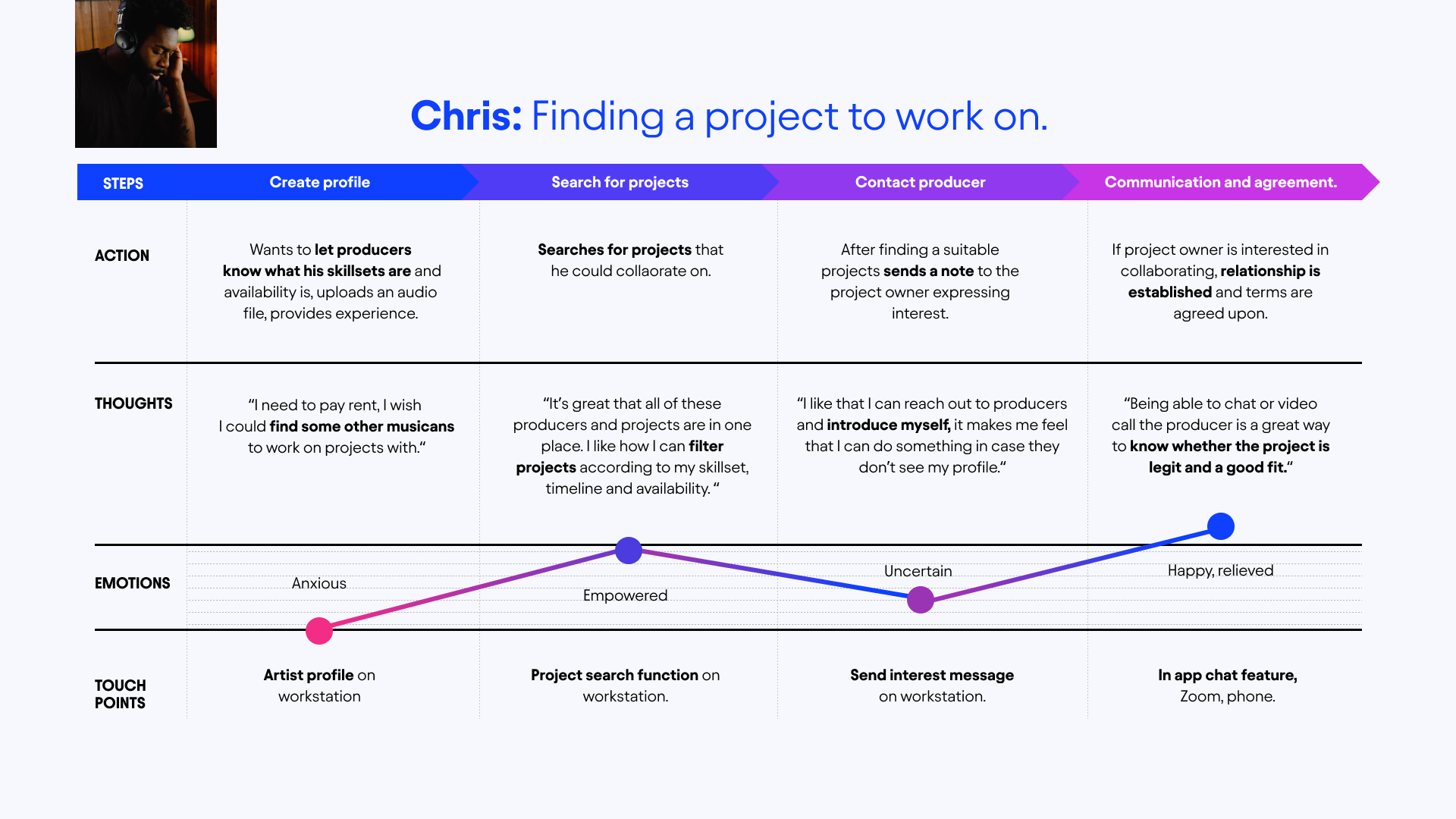
ABOVE: Personas & journey maps.
RESEARCH: TASK FLOWS
Task flows were used to uncover key steps in the user journey like creating a profile page and searching for collaborators. An area of opportunity emerged: could the platform help match users, employing the 5 key attributes to creative collboration findings discovered in the user research phase as a basis, potentially surfacing compatible collaborators and filtering out incompatible ones?

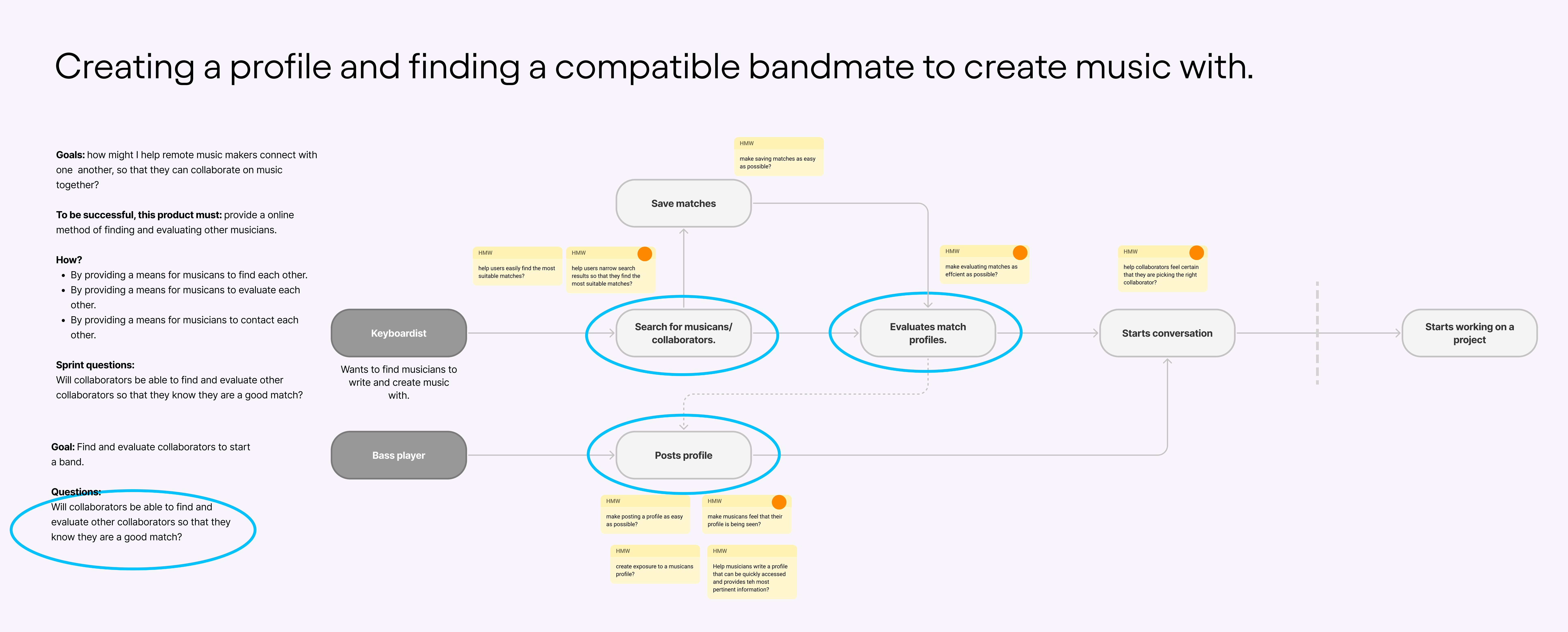
ABOVE: Task flows.
THE SOLUTION: FEATURES
With this in mind, a feature set was developed to help users to reach their goal of finding collaborators:
Onboarding questionnaire: used to identify a user's personality, goals, taste/vision, skill sets, and technological capabilities.
User profile: a public facing page created from the questionnaire.
Search engine: used to search profiles by genre, goals and skill sets.
Filters and search results list: used by users to narrow and evaluate profiles.
THE SOLUTION: USER FLOW
A detailed user flow helped flesh out the steps for each feature and connect flows together. The solution would require a robust onboarding questionnaire based on the 5 key collaboration attributes uncovered in the discovery research. The platform could then use these attributes to create a profile and match compatible users via a search.

ABOVE: A detailed user flow showing how users would journey through the application.
THE SOLUTION: IDEATION & SKETCHING
Sketching helped generate ideas and flesh out interaction details for the 4 main flows.





ABOVE: Working rough concepts into solution sketches, and then into mid-fidelity wireframes.
THE SOLUTION: WIREFLOWS
A happy path was then mapped out using wireflows, furthering an understanding of the interactions needed for a user to complete the questionaire, edit a profile, search for and evaluate other musicans.

ABOVE: A detailed wire flow outlining needed interactions for the happy path.
THE SOLUTION: WIREFRAMES & USABILITY TESTS

ABOVE: High-fidelity wireframes used for usability tests.
A first round of remote moderated usability tests was conducted with 2 participants on mid-fidelity wireframes to test key features. This indicated that the key features were understood, however it was discovered that some interactions and navigation components needed improvement and clarification.
With these changes a high-fidelity prototype was developed and tested. In total, 3 remote moderated user tests, 5 remote unmoderated user tests, and 2 expert sessions provided feedback for the final high-fidelity prototype. Participants were recruited from a screener posted on a songwriters Reddit subgroup as well as the designers personal contacts.
Finding #1
Search results card was difficult to scan; some high level content and useful functionality was missing; and match ranking indicator was unclear.
Solution:Change match ranking system to a more accurate percentage rating.
Add an audio sample and user location.
Improve visual hierarchy and group like content.
Consolidate actions together.

Finding #2
Search bar field in the filter tab on the results page is difficult to use as it cut off user entry.
Solution:Design should allow for longer text entries.

Finding #3Language is ambigious, unclear, or too formal at times.
Language is ambigious, unclear, or too formal at times.
Solution:Replace formal language like ‘collaborators’ to more casual and conversational language.
Change ambigious language like ‘technologies’ to be more descriptive and conversational.
Consider implementing a help system.
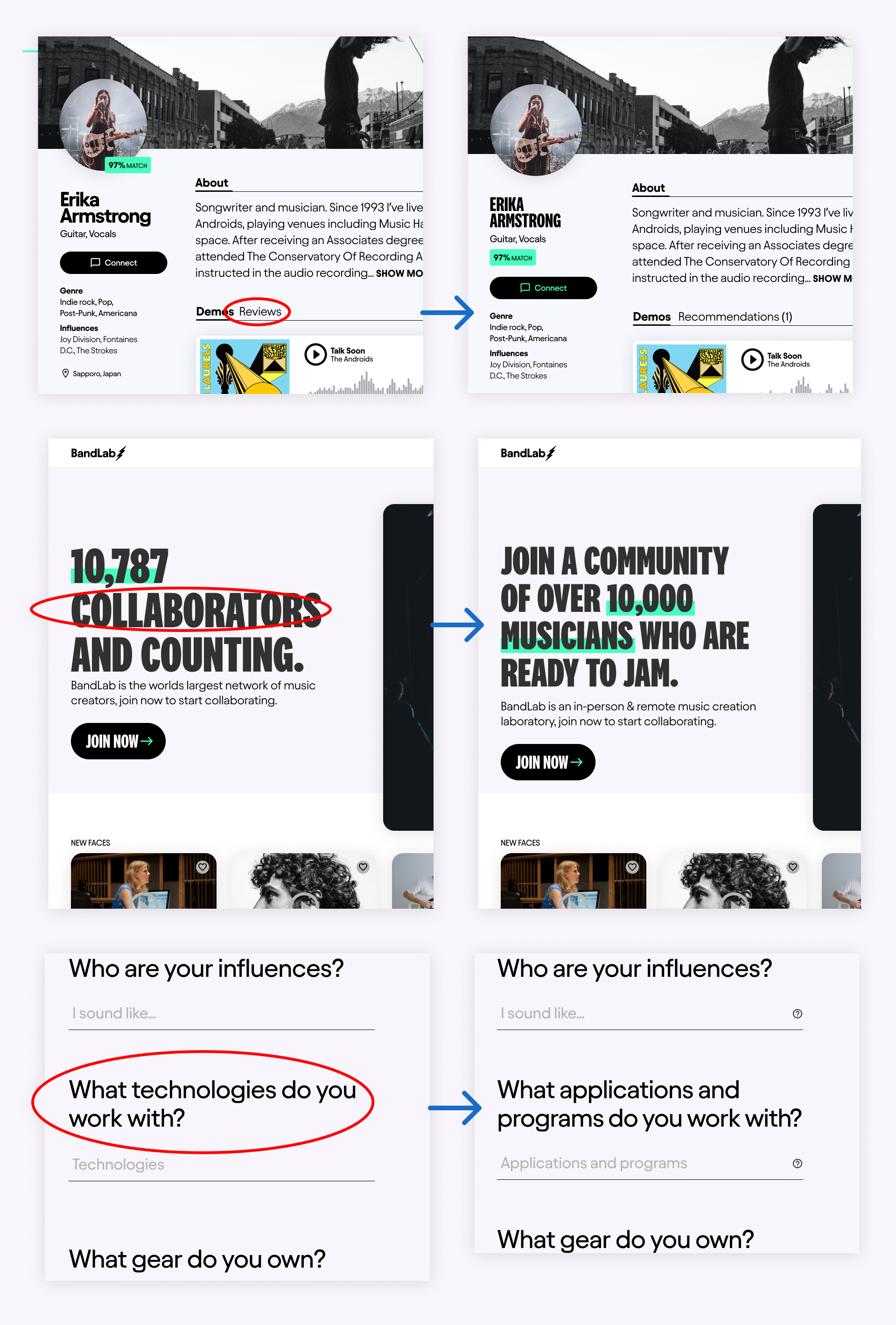
HIGH-FIDELITY PROTOTYPE
Guided walkthrough
Changes were then made to the high-fidelity prototype which became the final design.
Guided walkthrough






ABOVE: High fidelity screens.
DESIGN SYSTEM


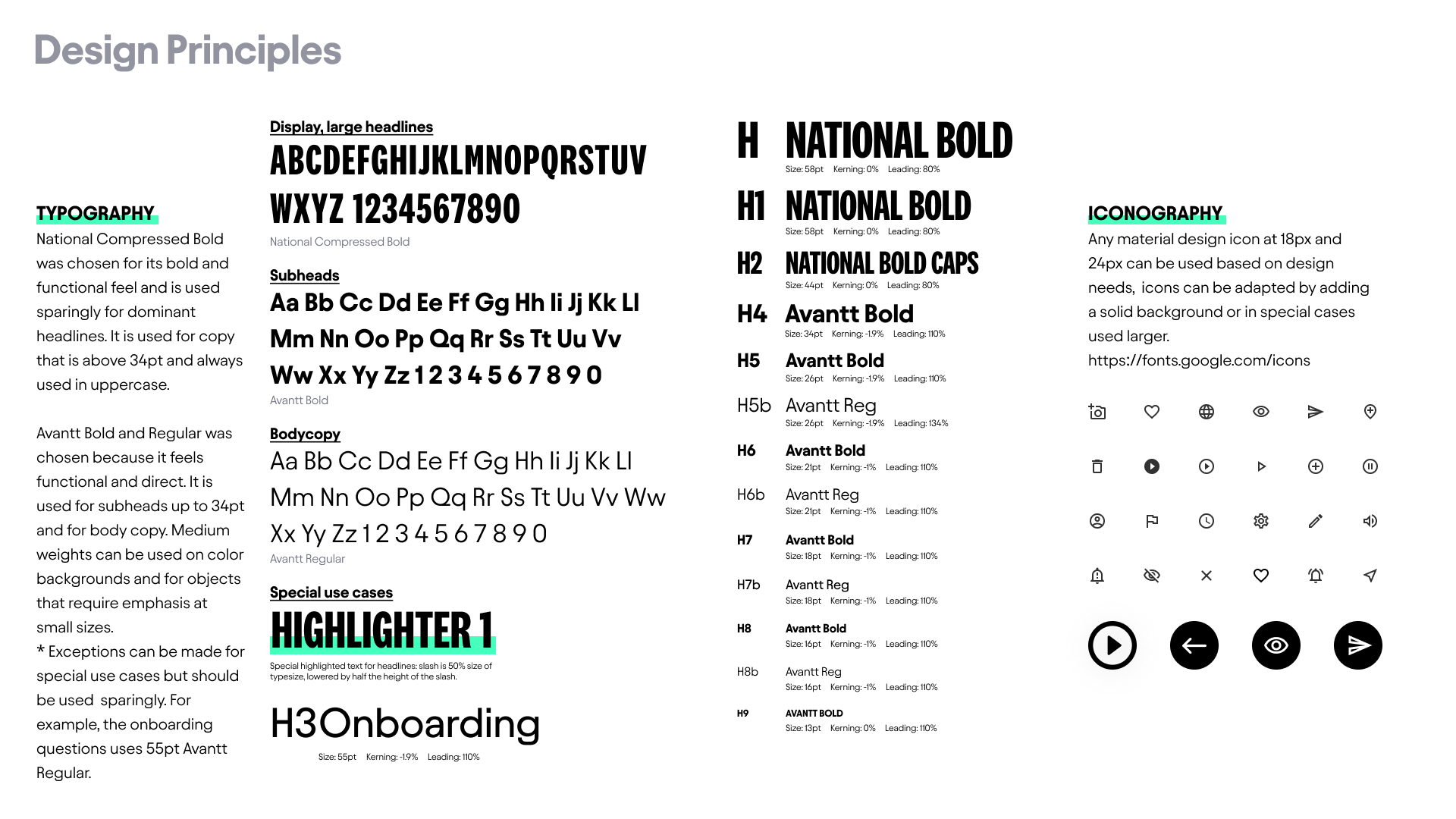



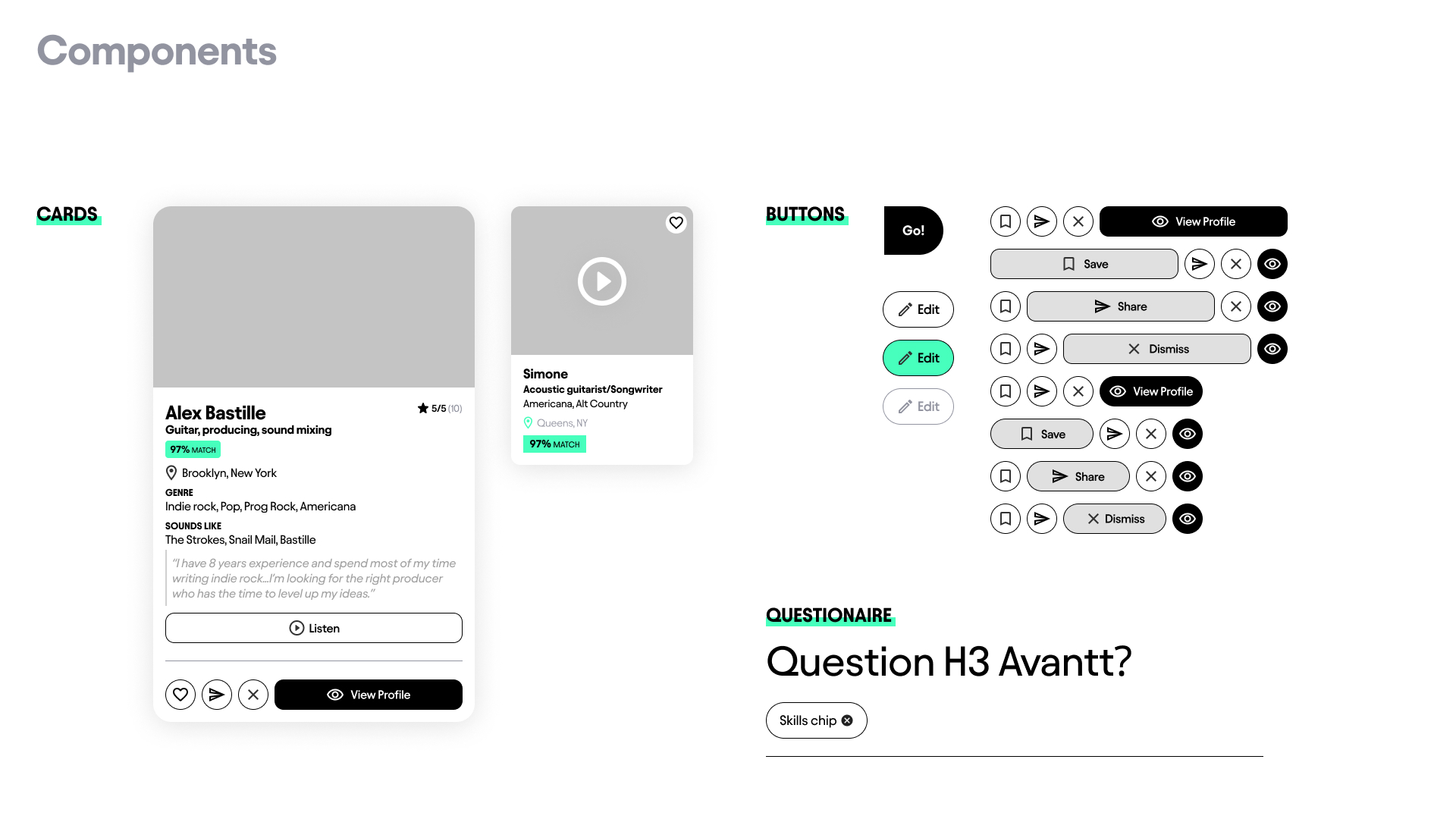

This project was developed as part of the Masters in UX Design program at the Maryland Institute College of Art. Special thanks to my classmates and MICA UX MPS faculty advisors (Christine Chiang, Arkadiy Avrorov, Logan Perez) for providing valuable feedback and expertise.